Wet Bulb Globe Temperature
(Experimental. Not for operational use)
Maximum Wet Bulb Globe Temperature
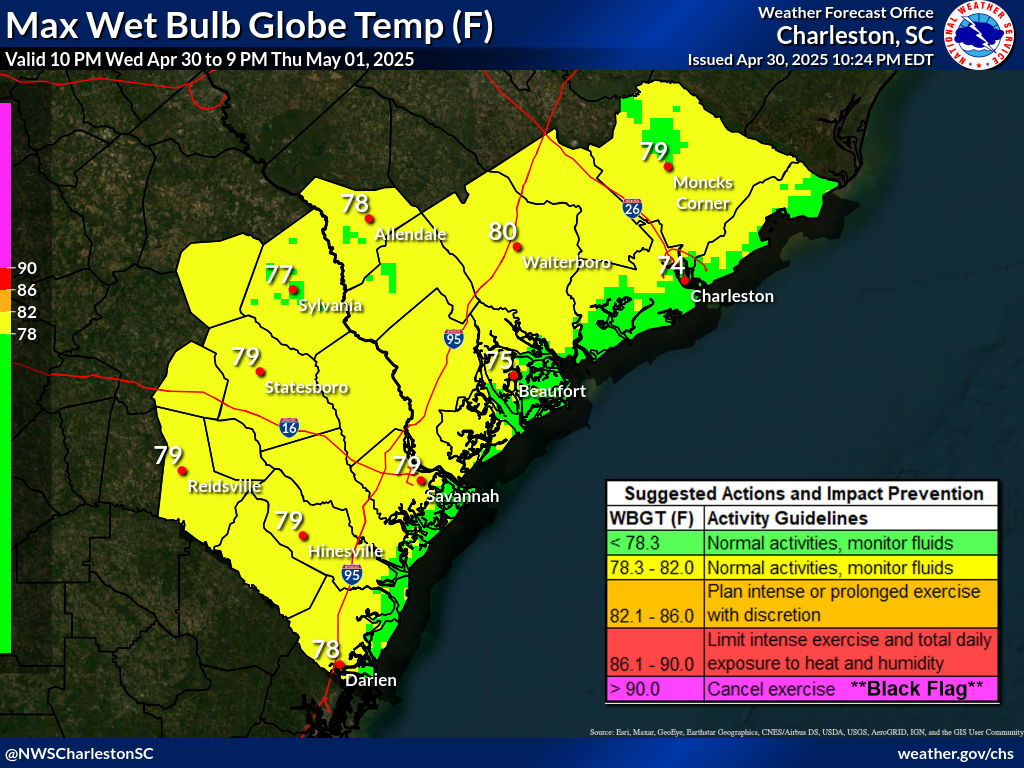 Day 1 |
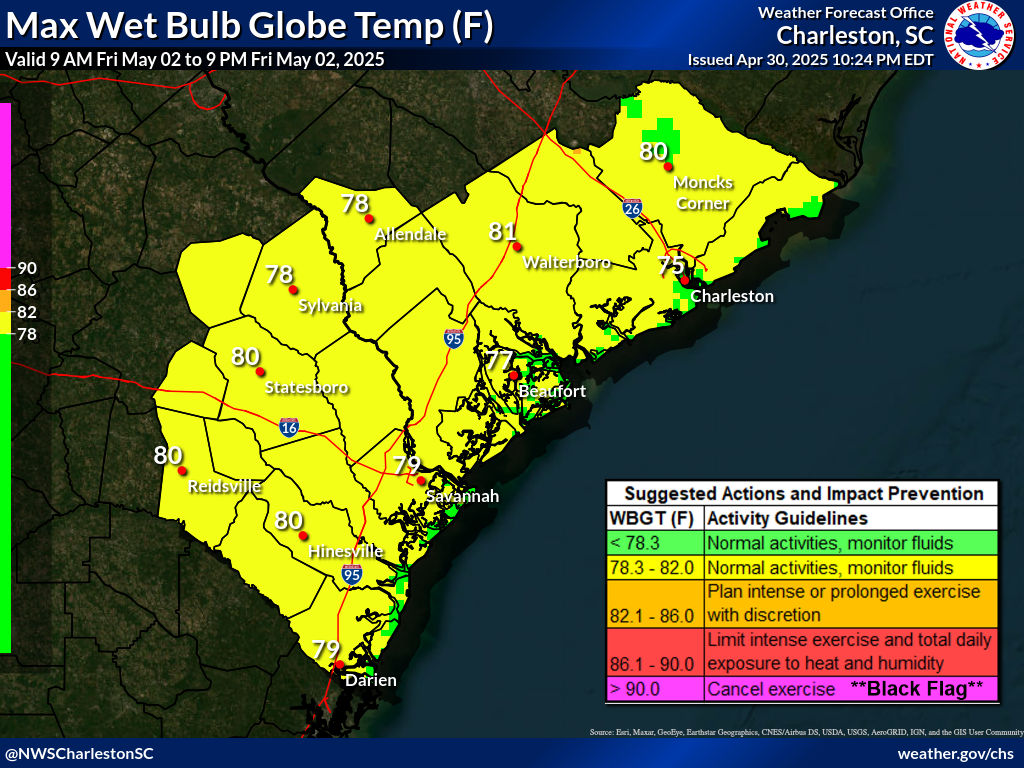 Day 2 |
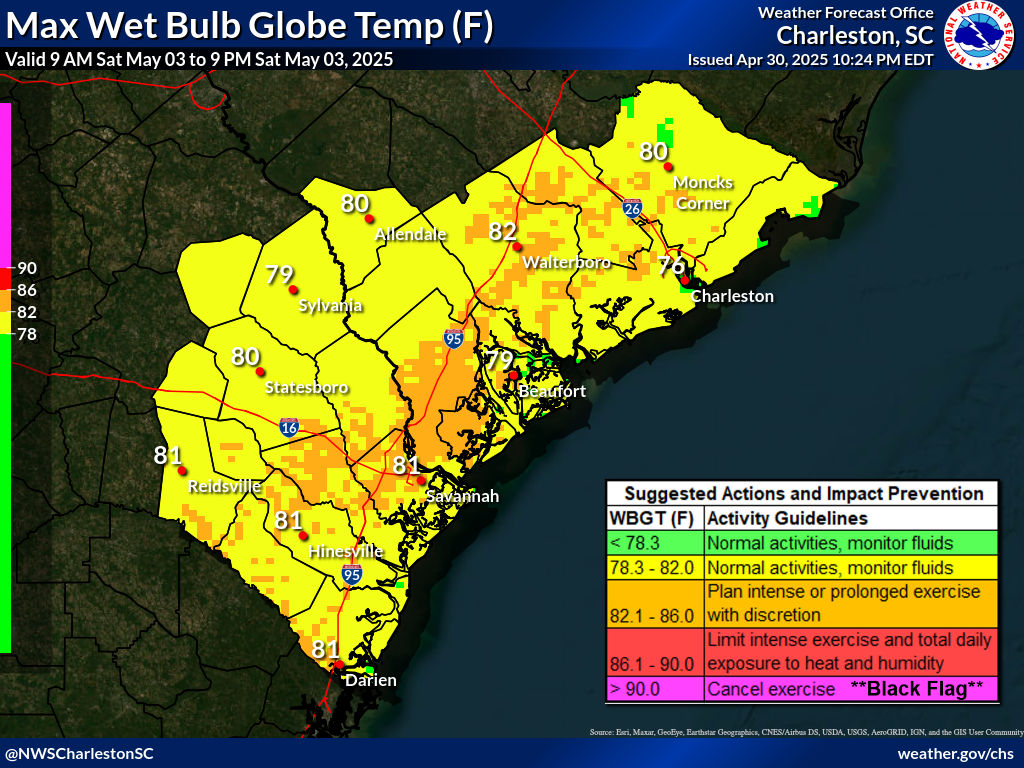 Day 3 |
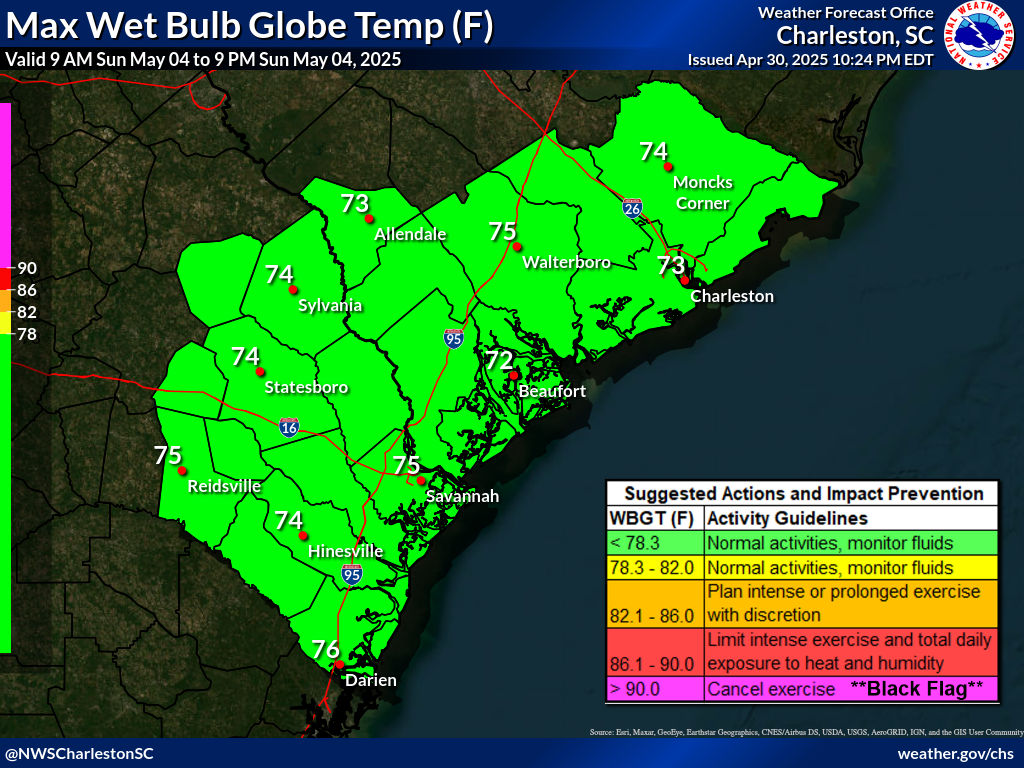 Day 4 |
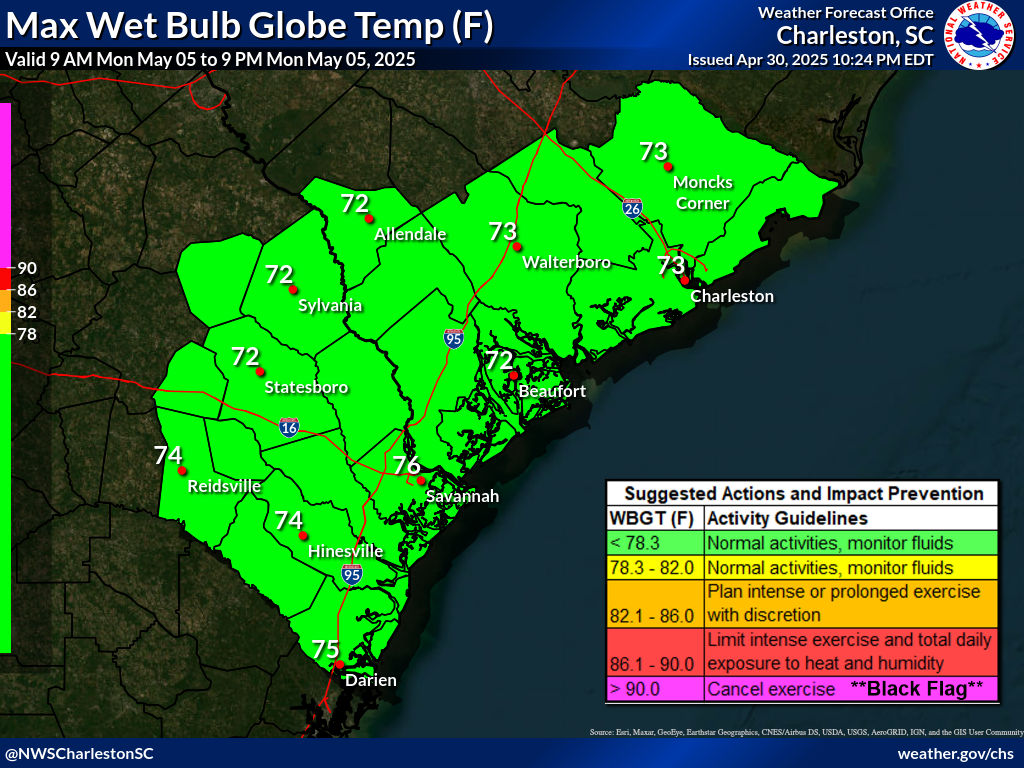 Day 5 |
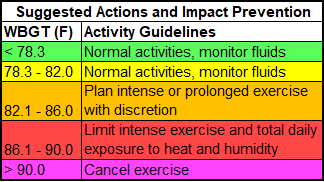
What is WBGT?
Wet Bulb Globe Temperature (WBGT) is a measure of heat stress in direct sunlight, which takes into account: temperature, humidity, wind speed, sun angle and cloud cover (solar radiation). This differs from the more commonly known heat index, which takes into consideration temperature and humidity and is calculated for shady areas.
WBGT can be used to establish guidelines for activity modifications during physical activity in the heat. Guidelines will vary geographically since temperatures fluctuate by region, and people's response to heat will also vary by the region they are acclimated to. Outdoor workers, people doing strenuous outdoor activities, and athletes or marching bands are a few examples of people who can benefit from the use of WBGT.
Bottom-line upfront >>>> what value should you use? For day-to-day activities, heat index will serve you well. If you work outside or plan on any sort of vigorous outdoor activity in the full sun, use the WBGT.
Comparing WBGT and Heat Index
|
Examples
|
Wet Bulb Globe Temperature
|
|
|
|||||||||||||||||||||||||||||||||||||
Map, calculator courtesy National Weather Service - Tulsa
Guidelines - Charts
While there is not set criterion for WBGT temperatures and related risks/impacts, the American College of Sports Medicine (ACSM) has developed a set of values that have been accepted as a standard to follow. Their original guidelines were developed for running events, but have since been expanded to include intermittent (non-continuous) activities [Medicine & Science in Sports & Exercise: March 2007 - Volume 39 - Issue 3 - p 556-572] . The guidelines are not based on location.
Using ACSM as a starting point, further research by the University of Georgia (UGA) factored in climatology and regional differences in an effort to incorporate acclimatization* into the guidelines.
The military and OSHA also have devised recommendations, as do many university and high school athletic departments.
It should be noted that while WBGT will provide solid guidelines, other factors such as an individual’s physical fitness, acclimatization, medical condition, and age also have an impact.
* Acclimatization: the body's natural adaptation to heat/cold. The process usually takes 10 to 14 days.
NOT based on location - American College of Sports Medicine
| Continuous Activities | Intermittent Activities | |
|
Activities with little if any break, such as cross country running, 5K runs, and marathons. |
Activities that generally have breaks between bursts of high intensity movements/actions, such as football, soccer, lacrosse, etc. |
|
 |
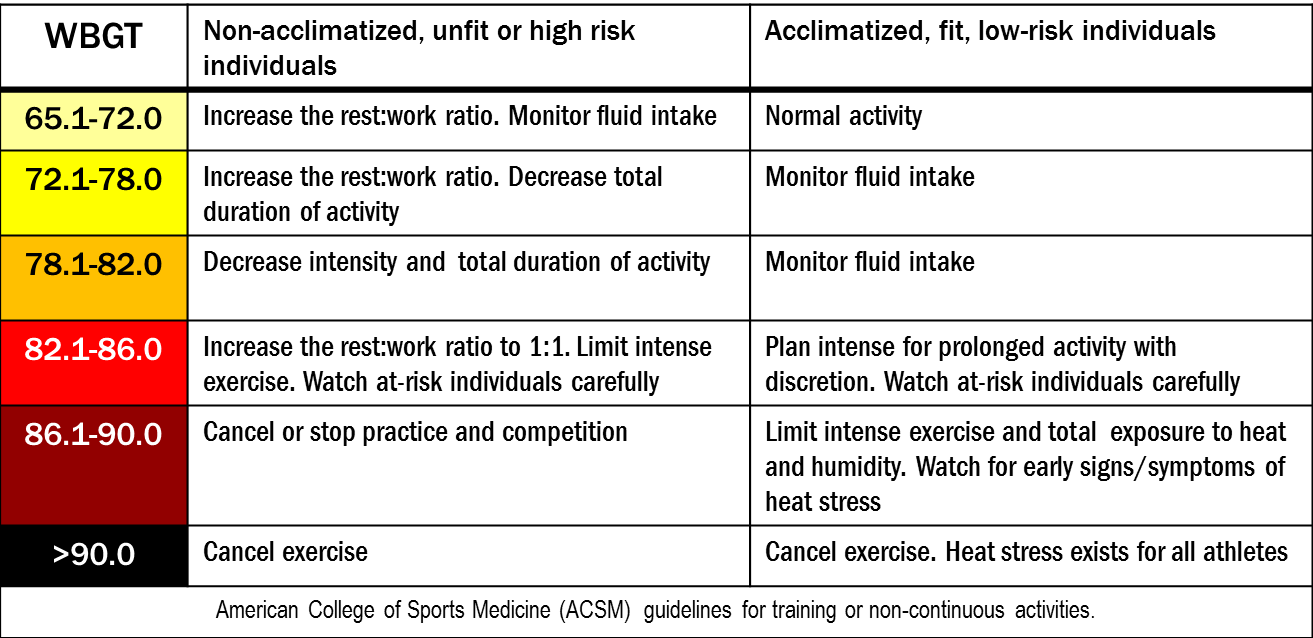 |
|
|
Guidelines from the American College of Sports Medicine - not based on location |
Guidelines from the American College of Sports Medicine - not based on location |
Based On Location
| The following recommendations use similar criteria as the ACSM, but modified for location and climatology. This adjustment factors in the acclimatization that occurs for those that consistently work and exercise in hot environments. |
 |
 |
|
|
Guidelines from the University of Georgia |
Regional Categories |
Heat Safety and Additional Resources
Prepare
Before:
During:
Resources